7.8 /10 1 Votes7.8
78% Metacritic Designer(s) Hiroshi Shibata Initial release date 23 August 2013 | 7.4/10 IGN 8/10 GameSpot Developer Platinum Games | |||||||||||||||||||||||||||||||||
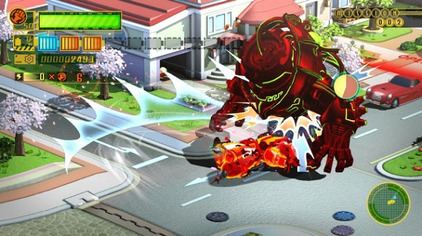 | ||||||||||||||||||||||||||||||||||
Producer(s) Atsushi InabaHitoshi Yamagami Artist(s) Yuka KotakiRyo Koizumi Composer(s) Hiroshi YamaguchiAkira TakizawaHitomi KurokawaNorihiko HibinoMasato KoudaRei Kondoh Mode(s) Single-player, multiplayer Similar Platinum games, Beat 'em up games | ||||||||||||||||||||||||||||||||||
Ign reviews the wonderful 101 review
The Wonderful 101 (ザ・ワンダフル・ワン・オー・ワン, Za Wandafuru Wan Ō Wan) is an action-adventure video game developed by PlatinumGames and published by Nintendo exclusively for the Wii U. The game was directed by Hideki Kamiya and produced by Atsushi Inaba, who worked on the Viewtiful Joe series and Ōkami together. It was initially set to release during the Wii U's launch window (which lasted from the console's launch until the end of March 2013) in North America and Japan, but instead was released at the end of August 2013 in all territories except North America, where it was released on September 15.
Contents
- Ign reviews the wonderful 101 review
- The wonderful 101 gameplay walkthrough part 1 operation 000 prologue nintendo wii u
- Gameplay
- Modes
- Setting
- Characters
- Story
- Development
- Music
- Marketing
- Reception
- Sales
- References
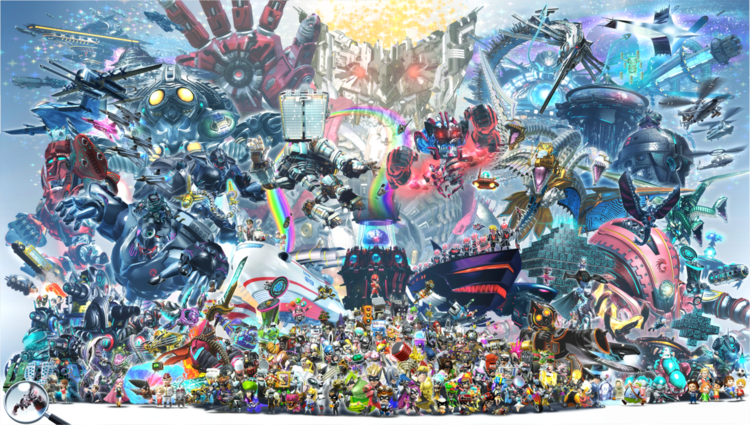
The wonderful 101 gameplay walkthrough part 1 operation 000 prologue nintendo wii u
Gameplay
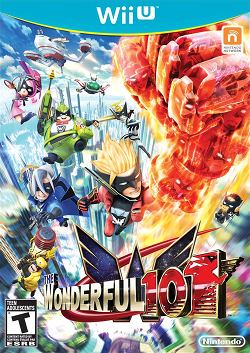
In The Wonderful 101, players control a horde of superheroes from an isometric viewpoint and can turn them into various objects called "Unite Morphs". As levels progress, players must explore each stage to find helpless citizens and recruit them to join their army of heroes. The more heroes gathered, the greater the special morph powers can be. Players can use "Unite Morph" forms to battle off enemies, solve puzzles or traverse the environment at the cost of depleting the player's battery meter. The meter can be recharged by performing normal attacks or by picking up batteries dropped by a defeated enemy. Enemies will also drop "O parts", the in-game currency used to buy upgrades, new "Unite Morph" abilities and items. To transform the horde of heroes, shapes are drawn on the Wii U GamePad's touchscreen or right analog stick the corresponding symbol of a form, such as an “L” for a gun or a squiggly line for a whip. The GamePad can also be used to see things from a traditional third person angle and explore tighter environments better, such as indoors.
Modes
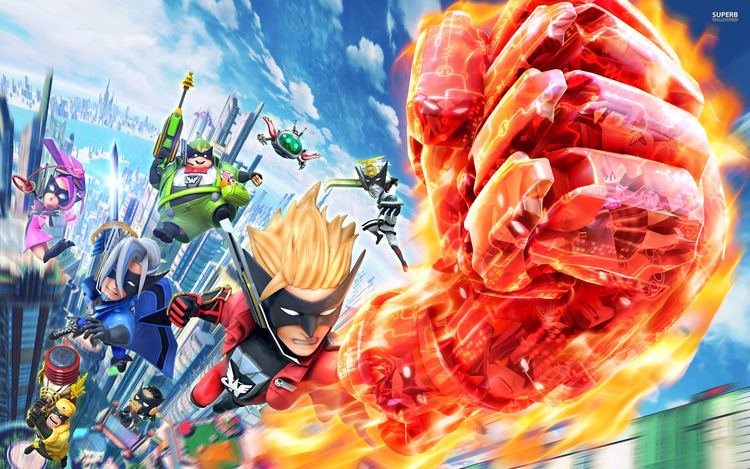
The single-player campaign is broken between levels. Each level ends with a grade depending on a number of factors, such as how long it takes the player to complete and how much damage the player takes. In addition to a single-player mode, the game has a cooperative mode that supports up to five players, with one person utilizing the GamePad and the four others using their own Wii U Pro Controller.
Setting
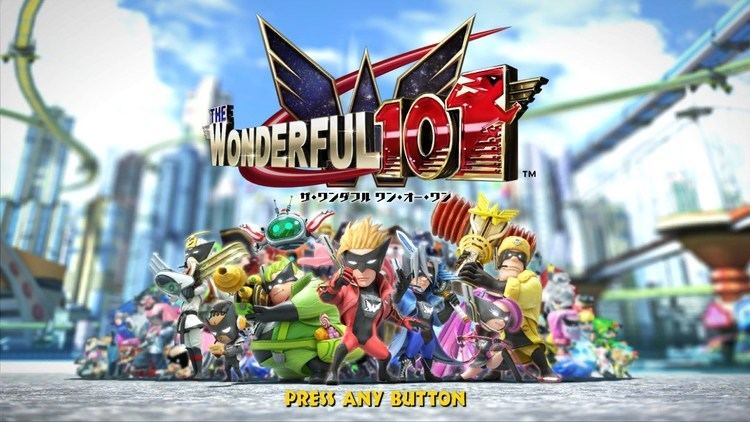
The game takes place during the third war with the alien terrorist organization called "The GEATHJERK Federation" that invades Earth. The only hope to defend humanity is for the Wonderful Ones, a group of superheroes keeping their own identical names and working for their organization, the CENTINELS Planetary Secret Service created by the United Nations. The heroes use every types of Unite Morphs, such as hands, swords, guns, whips, hammers, claws and bombs among other skills with the Wonder-Liner.
Characters

The main protagonists for the Wonderful Ones are Will Wedgewood (Wonder-Red), a Blossom City elementary school teacher and the leader of the Wonderful Ones, whose father Arthur is killed by Laambo, Eliot Hooker (Wonder-Blue), a police detective whose older brother is killed by Vijounne, guns expert Jean-Sebastain Renault (Wonder-Green), fashion modeler Mariana Kretzulesco (Wonder-Pink), Russian soldier Ivan Istochinkov (Wonder-Yellow), samurai Momoe Byakkoin (Wonder-White), and video game player Krishna Ramanujan (Wonder-Black).

The supporting characters for the game are P-Star, a robot who supports the heroes, Laurence Nelson, the commander of the CENTINELS who is previously known as Wonder-Captain, Virgin Victory operator Alice MacGregor and science chief James Shirogane. Luka Alan Smithee, a Blossom City Elementary School student whose scientist mother, Margarita died working for the CENTINELS and giving life for the artificial intelligence, the Mother Platinum to support the barrier on Earth, Luka joins the group and becomes Wonder-Googles at the end of the game. Immorta, the last member of the Galactic Police Federation, whose brother Prince Vorkken lived at the Roaming Comet Rhullo, but he is brainwashed by Gimme, who plants the virus resembling bio-weapon insect named Vaaiki on Vorkken's body. Vorkken becomes the space pirate leader of the Guyzoch and sides with Chewgi.
The main villain is Jergingha, the supreme overlord of the GEATHJERK Federation who attempts to use Chi-Q to take back the galactic peace from humanity.
Story
The story opens with a schoolbus full of children being attacked by alien invaders known as the GEATHJERK. The teacher, Mr. Wedgewood, transforms into the superhero Wonder-Red and teams up with the other superheroes to destroy the aliens. However, one student, Luka, appears disillusioned and expresses his hate for both the heroes and the aliens. This sequence serves as the game's tutorial, introducing the heroes and their Unite Morph ability.
The heroes then meet on their flagship to plan their defenses. The Earth is protected from invasion by a shield, powered by five Super Reactors. The heroes must travel around the world to protect these reactors and destroy the aliens who slip through the shield. As they travel, they meet up with Professor Shirogane, who explains that once the reactors are safe, they will use an orbiting cannon, the Shirogane Comet, to destroy the remainder of the aliens. Along the way, Wonder-Red struggles with leading his team, particularly with Wonder-Blue, whose brother was killed by one of the alien leaders. Blue's quest for revenge causes several problems until Red can convince him to cooperate with the team. Also, Luka stows away on the ship, and the heroes are forced to bring him along to keep him safe.
The heroes also repeatedly fight the space pirate Prince Vorkken, and his first mate Chewgi. Vorkken is searching for the strongest fighters in the galaxy so that he can have the strength to get revenge on the Geathjerk. Vorkken fights with Unite Morph attacks, similar to the heroes, and serves as a foil to Wonder-Red in their encounters. With the help of Vorkken's sister Immorta, the heroes defeat him, and Wonder-Red convinces Vorkken that his thirst for revenge has turned him evil.
At the climax of the story, Luka betrays the heroes and joins the aliens, revealing that his pendant is the key that controls the Super Reactors. Luka explains that his mother died working on the shield that protects the Earth, and he wants the aliens to destroy the Earth to get revenge for his mother. However, Wonder-Red reveals that Luka's mother is still alive, and that she turned herself into Mother Platinum, the computer system that controls Earth's defenses. Luka abandons his desire for revenge, and Mother Platinum gathers pieces of the destroyed city and creates a giant robot named "Platinum Robo." Using the robot, the heroes fight their way to the Shirogane Comet and fire its cannon, destroying the invading fleet. However, the alien leader, Jergingha, arrives in a gigantic fortress, with an even bigger fleet. Platinum Robo flies to attack the fortress, and Chewgi and Vorkken return to help them break through its defenses. Jergingha's fortress turns into a giant robot, even bigger than Platinum Robo, but the Wonderful Ones, Immorta, and Vorkken all combine their power and destroy it, saving the world. The aliens leave with Vorkken to help rebuild the worlds he attacked, and Luka joins the Wonderful 100 to help make up for his mistakes. As a result, the team is renamed to the "Wonderful 101."
The epilogue shows Luka (now "Wonder-Goggles") and the other heroes saving a schoolbus from the aliens, paralleling the game's opening. The story ends with the heroes continuing their fight against the remaining Geathjerks.
Development
Development of what would become The Wonderful 101 began during the lifetime of the Wii. The original idea came from PlatinumGames' president, Tatsuya Minami, who wanted to bring a group of popular or iconic video game characters together in one game. Because different gamers would prefer certain characters over others, being forced to play as a certain character at a certain point in the game was quickly scrapped. Instead, all of the characters would be on-screen at once so the player could choose between them at any time. PlatinumGames initially thought of using Nintendo first-party characters who would work together to get past obstacles, but when the idea was presented to Nintendo, they questioned how the mechanic would fill an entire game. Director Hideki Kamiya also doubted that the "conflicting elements" of the different Nintendo characters could be "put into a consistent formula" successfully like in the Super Smash Bros. series. Further brainstorming was put on hold while he worked on another game, but when that game was put on hiatus a year later, work on The Wonderful 101 resumed. Kamiya decided to use the Japanese henshin/transforming theme with a group of five original heroes who could unite and transform into various weapons. Soon the group expanded to one hundred heroes, and the Japanese superhero style changed to "an American comic book vibe." Although the developers had been thinking of making the game for the Wii, when PlatinumGames and Nintendo finalized their partnership, it became Wii U-exclusive. The developers wanted to use the console's unique features effectively, so they came up with drawing on the GamePad as a way to activate the "Unite Morphs".
Much like Hideki Kamiya's Viewtiful Joe, The Wonderful 101 is inspired by tokusatsu—Japanese live-action films or television drama with a heavy emphasis on special effects. The main heroes’ outfits resemble those found in tokusatsu shows like Super Sentai, its American counterpart Power Rangers, and Kamen Rider, while the enemies resemble the giant monsters found in kaiju films, such as Godzilla and Gamera.
Music
The music in this game is done in an orchestrated score, and written by Hiroshi Yamaguchi, Akira Takizawa, Hitomi Kurokawa, Norihiko Hibino, Masato Kouda and Rei Kondoh. The theme songs are called "The Won-Stoppable Wonderful 100" and "The Won-Stoppable Wonderful 101", which is sung by Foresta in the Japanese version, and by Jimmy Wilcox, Rob McElroy, and Bruce Blanchard in the English version. A two-volume official soundtrack was released on September 15, 2014.
Marketing
The Wonderful 101 was revealed at E3 2012 on the conference floor, codenamed Project P-100. On July 3, 2013, Nintendo introduced their "Wonderful Wednesday" social networking campaign to promote The Wonderful 101, where each Wednesday leading up to the game, they release a new character portrait. However, two days later, Kamiya posted how he worried about the lack of marketing for The Wonderful 101 on Twitter, mostly referring to the lack of information in magazines or websites, and claiming that the game took almost 1.5 times the resources and manpower as Platinum’s biggest game, Bayonetta. During the August 7, 2013 Nintendo Direct, Satoru Iwata announced that on August 9, 2013 a Nintendo Direct presentation would be made exclusively for The Wonderful 101.
Reception
The Wonderful 101 received generally positive reviews from critics. It has an aggregate score of 78.02% on GameRankings and 78/100 on Metacritic. The game received comments from some game critics concerning its hard learning curve, while others, such as Nintendo Enthusiast's Michael Nelson, praised the game for requiring a certain amount of skill.
Most reviewers enjoyed the ridiculously nonsensical story, characters, and humor, but found the few sexual jokes out-of-place in a perceived kid-friendly game, although it retains a Teen rating. The Wonderful 101's length and pacing seemed a bit drawn-out to some reviewers due to repetitive enemies and boss fights, while others thought they were alright thanks to the even distribution of new moves and upgrades.
Forming weapons by drawing on the touchscreen garnered mixed reception. Many reviewers found that the GamePad worked fine for straight lines or circles (to make a sword or a fist), but that it sometimes interpreted the wrong weapon for more complex shapes. Others thought that drawing simple shapes on the GamePad while using the right analogue stick for others was more reliable, or that the GamePad worked perfectly and it was simply a matter of practice. The camera was criticized for being too zoomed-out to keep track of all of the characters during battle but also too zoomed-in to see the occasional out-of-view enemy. Reviewers agreed that the game lived up to PlatinumGames' trademark high difficulty, with some citing the controls and camera as contributing factors.
Nearly all reviewers were pleased with the creative uses of the GamePad's second screen. However, a few thought that navigating inside of a building using the controller's gyroscope was clunky.
Reviewers thought the multiplayer mode was enjoyable, but often lost track of their own group of characters. Most agreed that it felt "tacked on."
Reviewers praised The Wonderful 101's cartoony art style and flashy effects in battle, but also thought the character models looked low-polygon if the view zoomed in. The set-pieces and giant bosses were likewise well-received, as were the voice acting and soundtrack.
Super Smash Bros. for Wii U contains trophies of the seven main characters from The Wonderful 101, as well as two music tracks.
Sales
Nintendo shipped 30,000 copies for the game’s launch in Japan. The game sold 5,258 copies in its first week in Japan and reached 22nd place in its first week of the UK sales chart.
